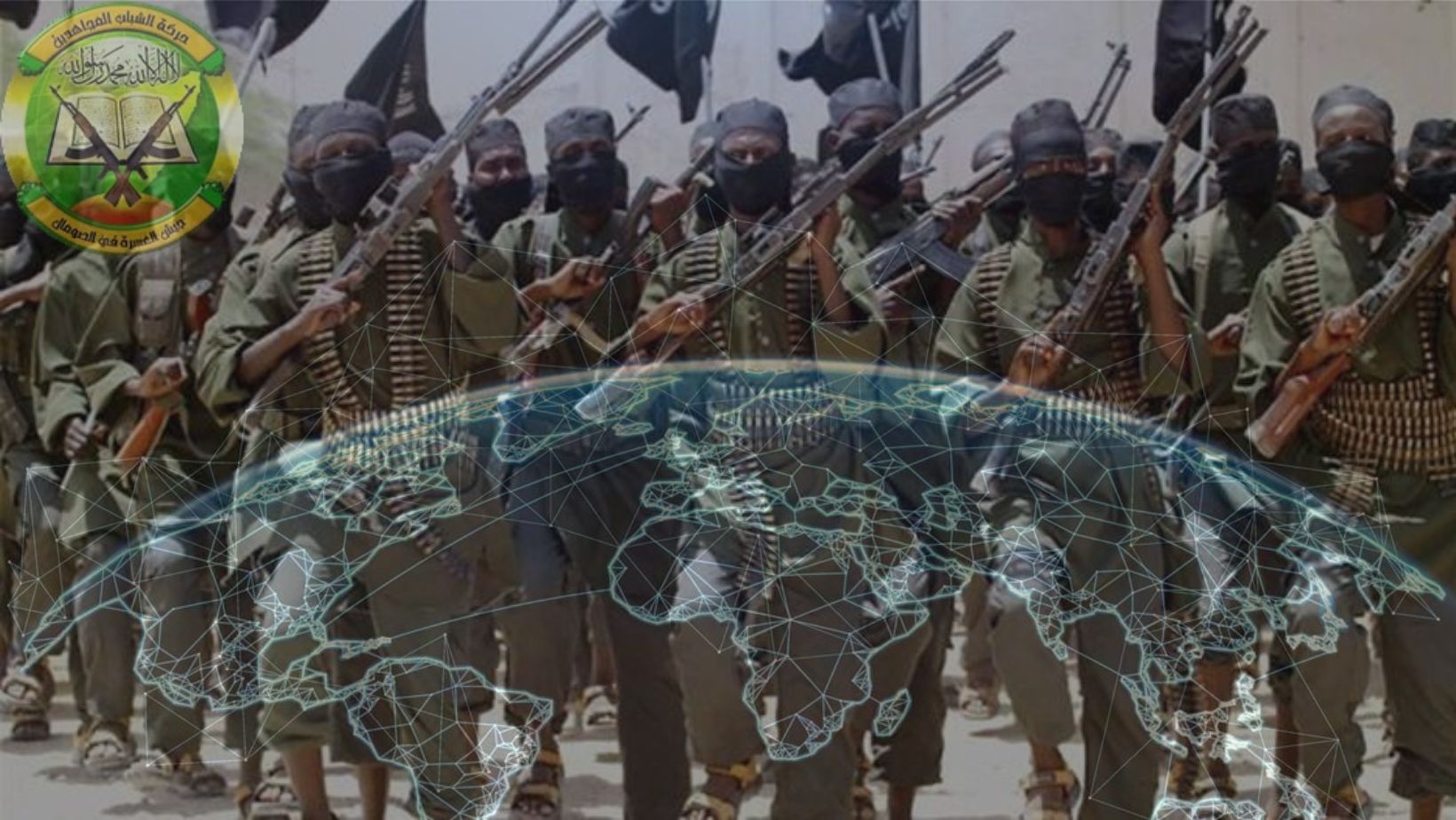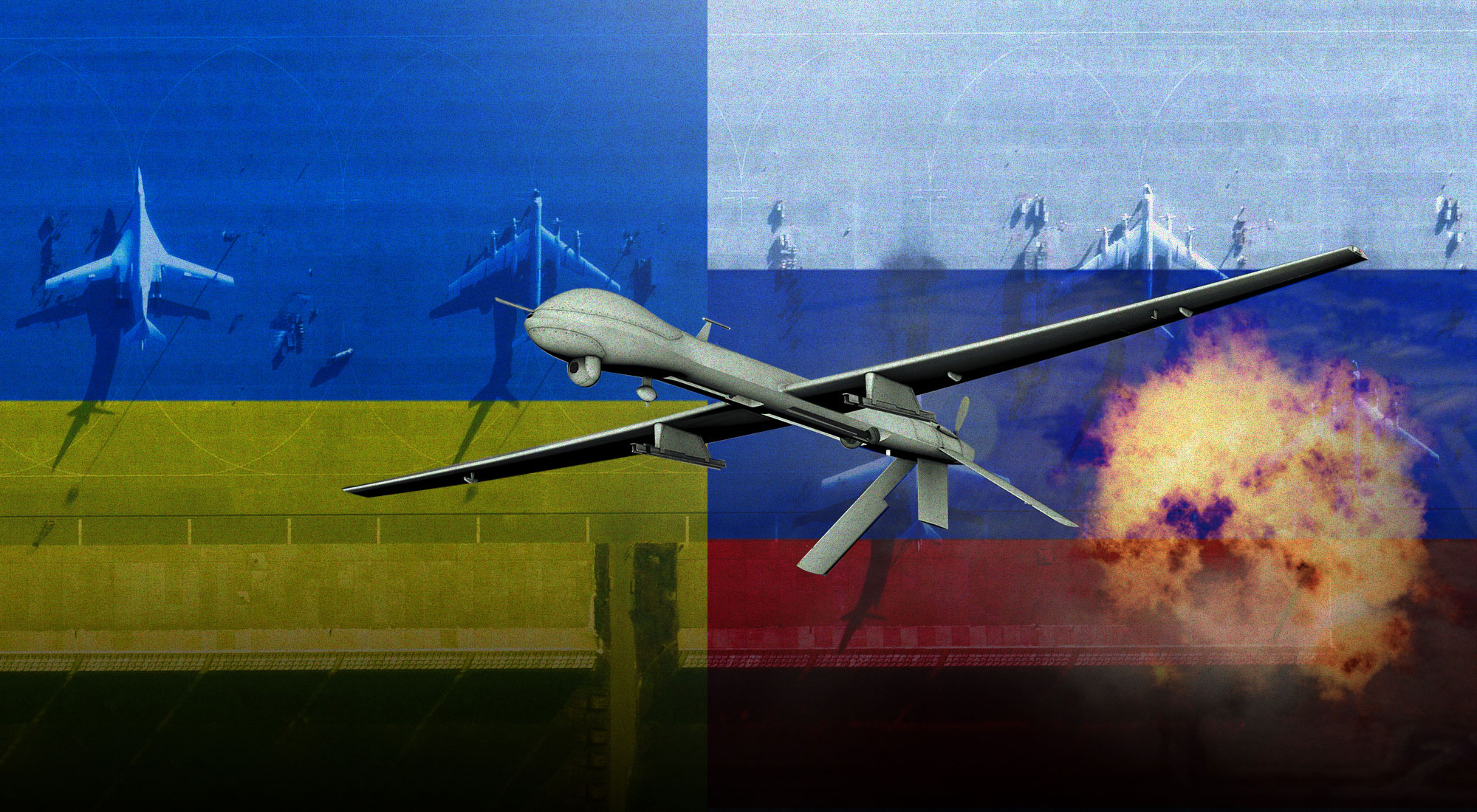Since its inception in 2005, the Al-Shabaab group has stayed true to its primary objective — to impose an Islamic state rooted in Sharia law — but it has also evolved to be part of an international order of the world political sphere. While internationalising in the East African sub-region, the Somalia-based jihadist organization, which now numbers an estimated 8,000 to 10,000 fighters, has made strategic changes according to the choices of its allies, one of whom is Al-Qaeda.
Joint efforts by the United States, United Nations, and African Union to combat Al-Shabaab worked temporarily, but the militants regrouped and have intensified attacks, including assassinations and suicide bombings. They have also branched out from Somalia, carrying out terror campaigns in Uganda, Kenya, and Tanzania. The international community’s answer to the resurgence of Al-Shabaab has been to adopt a UN resolution to assist Somalia’s government in their efforts to strengthen their security forces. This approach, however, will not solve the country’s terrorism problem. A failed state for more than 30 years, Somalia will need more than a simple military operation or civilian mission before it is no longer considered a lawless zone. The situation remains particularly dramatic for the 10 million Somalis who are trying to survive as best they can in a state that is unable to perform its most basic functions, in the face of almost total indifference from the international community.
The origin story: Founded out of chaos
Since 1988, Somalia has been engulfed in a civil war that seems unstoppable. Rebel groups successfully overthrew the Siad Barre government in 1991, but the resulting fight for power led to chaos. Warlords fought each for territory, and clan rivalries exacerbated the dire famine that killed an estimated 250,000-300,000 and drove hundreds of thousands more out of the country.
The UN intervened between 1992-1995, and along with the U.S. Army launched “Operation Restore Hope,” which brought humanitarian aid to the starving people, but was ended with Security Council Resolution 954 of 4 November 1994, which acknowledged the lack of cooperation by the warring factions. A “Transitional Federal Government” government was established in Somalia in 2004, but in June 2006 the Islamic Courts Union (ICU), a legal and political organization founded by Muslim clerics, took control of the capital, Mogadishu. The main military force behind this takeover was Al-Shabaab. They would expand into the rest of Central and Southern Somalia in the following months.
When the Al-Shabaab movement was created, the aim was to recruit young people, using religious discourse (Al-Shabaab literally means “youth” in Arabic), and to establish a state based solely on Sharia law in Somalia. The state of war in which the country was bogged down and the presence of foreign forces on Somali soil helped facilitate recruitment. Islam appealed to many of the people who had grown tired of feuding warlords and famine.
2006 – 2011: Al-Shabaab is driven back
Al-Shabaab was driven out later that year by an Ethiopian military intervention, and the transitional government returned. The Ethiopians, supported and financed by the George W. Bush administration until the end of 2008, broke Al-Shabaab’s hold on Somalia, but the jihadist group was able to bounce back and gain control of the main towns of the south. Between 2008 and 2011, Al-Shabaab, which absorbed a number of small local militias, managed to control up to two-thirds of Somalia’s territory.
In 2011, however, Al-Shabaab suffered a series of setbacks. Their refusal to accept humanitarian aid to fight against drought and famine lost them goodwill amongst the population. This distrust was exploited by the African Union Mission for Somalia (AMISOM), a peacekeeping force composed mainly of Ugandans and Burundians run by the AU and supported by the UN to train Somali security forces, who gradually won back territory in Mogadishu. An intervention by the Kenyan armed forces, also indirectly supported by the U.S., weakened the Islamist group’s positions and allowed the return of the transitional central government. Al-Shabaab left Mogadishu, one of their strongholds, in August 2011. A year later they lost control of the central city of Baidoa, and in September 2012 Kenyan soldiers liberated the port of Kismaayo, which Al-Shabaab had controlled since 2009. Kismaayo and the southern seaport of Marka generated an estimated US$35-million to US$50-million annually in port taxes and customs duties, making them the economic hub of the rebellion in the south of the country.[1]

Al-Shabaab Attacks from January 1st 2020 – March 9th 2021 / Source: ACLED

Al Shabaab Attacks in East Africa from July 1st 2013 – June 30th 2014 / Source: CriticalThreats.Org
2012 – present: Teaming up with Al-Qaeda and Daesh
Considerably weakened since 2011, Al-Shabaab nevertheless continues to control large areas of rural Somalia, particularly in the south. Though they have faced an intensification of armed strikes and a strengthened Western presence, Al-Shabaab continues to ambush government troops and AMISOM peacekeepers not only in Somalia but in Uganda, Kenya, and even Tanzania. The group has also managed to diversify its funding sources. Their popularity seems to ensure donations from abroad. In Somalia, Al-Shabaab collects money through a system of taxes, donations, and also through services rendered. “With their protection economy, business circles pay them tithes, as well as part of the diaspora that supports them,” explains the French researcher Roland Marchal. “Their funds also come via Al-Qaeda in the Islamic Peninsula, with whom they have been working hand in hand since they obtained their affiliation in 2013”[2]
Al-Shabaab is suspected by the international community of having strong links with Al Qaeda and of harbouring foreign jihadists, some from Europe and the United States.[3] To date, some 15 of the group’s training camps have been identified on Somali territory.[4] According to UN experts, the 2013 Westgate attack in Kenya demonstrated that violent extremism in the Horn of Africa is on the rise.[5] The threat of the spread of regional dormant cells of Al-Shabaab insurgents, or their sympathisers, is now real. Hundreds of young men have been recruited by Islamist extremists across the Horn of Africa, before being taken to Somalia for extensive training.[6] Just as they did when they were founded, Al-Shabaab targets uneducated, unemployed youth with the promise of good pay, free Islamic education, and marriage. They have expanded their recruitment from Somalia to vulnerable populations from other Arab countries and Pakistan. Women are often recruited, because they may attract less attention than men and can thus more easily carry out suicide explosions. Women may also be used to entice male recruits. Al-Shabaab is known for its use of forceful recruitment tactics, such as kidnapping. Recruits are enticed through a promise that joining Al-Shabaab will guarantee their entry to paradise. The group often labels those who disagree with them as “infidels” or “apostates,” causing vulnerable individuals to doubt their own religious beliefs. Despite the group’s religious rhetoric, when asked whether Al-Shabaab used religious leaders or religious teachings to spread their message, the majority of respondents responded in the negative.[7]
Al-Shabaab’s emir, Moktar Ali Zubeyr (aka Ahmed Abdi Godane), tried to join Al-Qaeda in 2009, but was rejected by Osama Bin-Laden. After Bin-Laden’s death in 2012, new leader Ayman al-Zawahiri accepted Al-Shabaab’s offer, and the two organizations merged. An increase of attacks in Somalia and neighbouring countries, notably Kenya, Uganda, and Tanzania, soon followed. After Zubeyr was killed by a U.S. airstrike in September 2014, his successor, Sheikh Ahmad Umar (aka Abu Ubaidah or Ahmed Direye), confirmed Al-Shabaab’s allegiance to Al-Qaeda and opposition to the establishment of Daesh in the region.
Despite Umar’s pledge, several Al-Shabaab members chose to join the Syrian-Iraqi front and fight for Abu Bakr al-Baghdadi, the leader of Daesh. According to the Long War Journal, Daesh has carried out approximately 100 terrorist operations in Somalia since 2016, while maintaining contact with the movement’s central leadership still based in the Syrian-Iraqi theatre. Even if Daesh has suffered major setbacks on the Syrian-Iraqi front, losing in particular its “proto-state,” the organisation is trying to strengthen its external branches. But everywhere, it comes up against the “parent company,” Al-Qaeda, which does not forgive Al-Baghdadi’s betrayal.
Nevertheless, Daesh is still formidable. As has been observed for the past two years in the field, they use social networks to call on their followers to take action wherever they are, even if they have no direct link with the organisation. Some Daesh propaganda documents proclaim that Somalia is one of Daesh’s external “provinces,” along with Libya, Sinai, Yemen, the Maghreb, the Afghan-Pakistani region, West Africa, and the Great Sahara. Al-Baghdadi, however, has always refrained from declaring the country as such, not wanting to add to the volatility of the local situation.
The main faction of Daesh active in Somalia is led by Abdul Qadir Mumin, a former Al-Shabaab leader who changed sides on 22 October 2015 and announced the founding of the “Islamic State of Somalia” (Abnaa ul-Calipha). Mumim was already leading some 300 Al-Shabaab jihadists in the Puntland region of northeast Somalia, however, the majority preferred not to follow him, leaving him with about 100 followers. Mumin has gained so much attention for his warlike statements, that he was listed as an international terrorist by the U.S. State Department in August 2016, and despite his diminished number of troops he is supported materially by the Yemeni wilaya (governorate) of the Islamic State and financially by some local crooked businessmen, more or less linked to the famous Somali pirates. Other independent groups claiming to be Daesh are also present further south, intertwined with Al-Shabaab, but there does not appear to be any direct connection between these groups and Mumin.
A solution close to home
Since 1995’s failure no UN blue helmet has been deployed in Somalia. Since then the UN’s resolutions have been limited to the constitution of an investigation group concerning the arms embargo, which was lifted on 5 March 2014, the continuation of the mandate granted to AMISOM, and measures to combat piracy, which have been in place since 2008.
The U.S., too, has mostly ignored Somalia. Some analysts argue that systemic structural factors were too weak because the U.S. had no material interests in Somalia such as oil or strategic requirement for military bases. In other words, the “Somalia lobby” is simply weaker than that of other struggling countries, Haiti for example, that the U.S. poured resources into rebuilding. Identity perspectives might also explain the lack of moral commitment to sustain U.S. involvement. As in 1919, the open-ended burdens of collective security and global humanitarian commitments proved too much for the U.S., and the American people were not ready to sacrifice American lives in places where the U.S. had no material interests.
UN Security Council Resolution 2628, passed on 31 March 2022, might be a step in the right direction. The resolution authorizes the AU Peace and Security Council to reconfigure AMISOM into the African Union Transitional Mission in Somalia (ATMIS) for an initial period of 12 months. AU Member States are obliged to take all necessary measures to implement the mandate of ATMIS, which includes, inter alia: reducing the threat posed by Al-Shabaab; supporting the capacity building of the Somali integrated security and police forces; the progressive transfer of security responsibilities to Somalia; and supporting the efforts of the Federal Government of Somalia and the Member States of the Federation towards peace and reconciliation.
International military action is needed to restore security and strengthen the legitimacy of the central Somali state, but a security-only approach would not solve any of the problems that have led the country into chaos. As long as the international community only responds in an emergency, it will not succeed in turning around the situation in a region that has become a global issue for human security. The structures of the Somali economy and society need to be addressed before the political structures can be addressed. The challenges of demographic growth, the division of society into clans and tribes, migration flows, the environment, and the strengthening of agriculture must be addressed before we can hope to defeat Al-Shabaab not only on the military front but also on the political front.
A model for Somalia might be close to home — in Somaliland. In the north, separatist authorities have restored peace throughout their territory, rebuilt their infrastructure, and held elections that no one has contested. The UN, under the combined pressure of the Arab League and the AU, refuses to recognise the independence of the former British colony, which maintains close cooperation with China, India, Singapore, and the European Union in some cases.
References
[1] Jamestown Foundation, “Can Somalia’s Al-Shabaab Survive the Loss of Kismayo?” Terrorism Monitor 10, no.19 (October 2012), https://www.refworld.org/docid/508674202.html.
[2] Roland Marchal, “Une lecture de la radicalisation djihadiste en Somalie,” Politique africaine 1, no. 149 (2018), https://doi.org/10.3917/polaf.149.0089.
[3] Jean Della Strada, “Comprendre la menace Shebab dans la Corne de l’Afrique,” WordPress, September 23, 2013, https://kekeliyaojean.wordpress.com/2013/09/23/com.
[4] Ibid.
[5] “Les Shebab somaliens, une menace régionale dans la Corne de l’Afrique,” jeuneafrique, 18 October, 2013, https://www.jeuneafrique.com/depeches/28850/politique/les-shebab-somaliens-une-menace-regionale-dans-la-corne-de-lafrique/.
[6] Faouzi Ksibi, “En une année, le nombre de jihadistes s’est multiplié par quatre,” Turess, August 7, 2013, https://www.turess.com/fr/letemps/78250.
[7] United Nations Assistance Mission in Somalia (UNSOM), Countering Al-Shabaab Propaganda and Recruitment Mechanisms in South Central Somalia (2017), https://unsom.unmissions.org/sites/default/files/countering_al-shabaab_propaganda_and_recruitment_mechanisms_report_final_-_14_august_2017.pdf.








